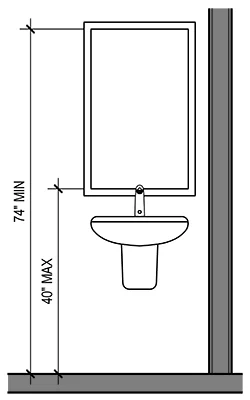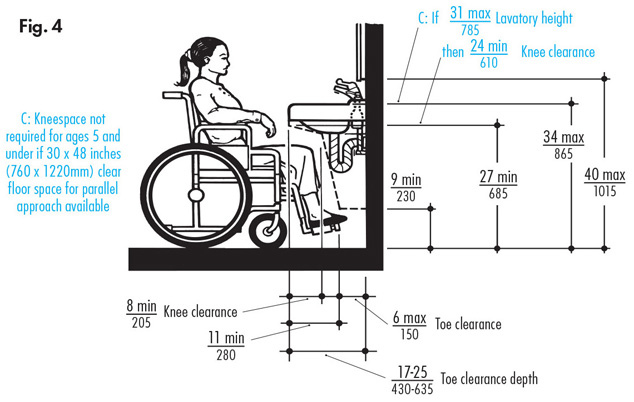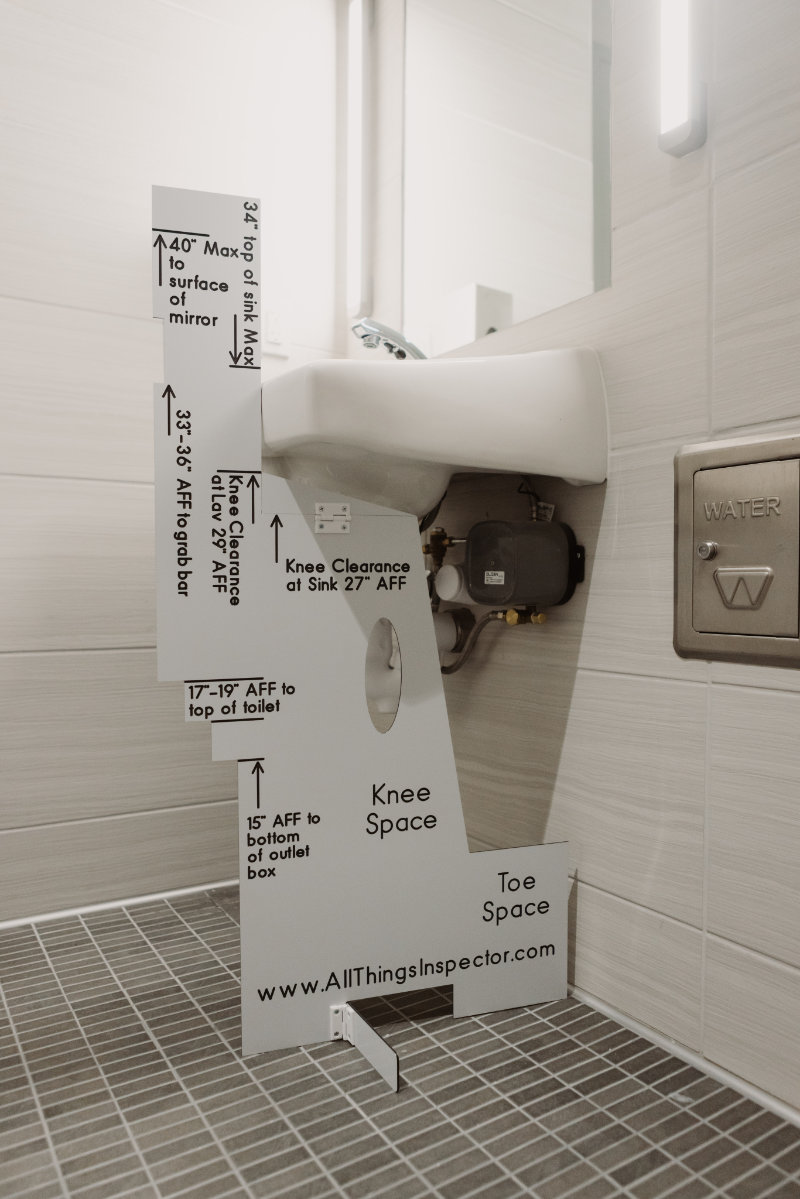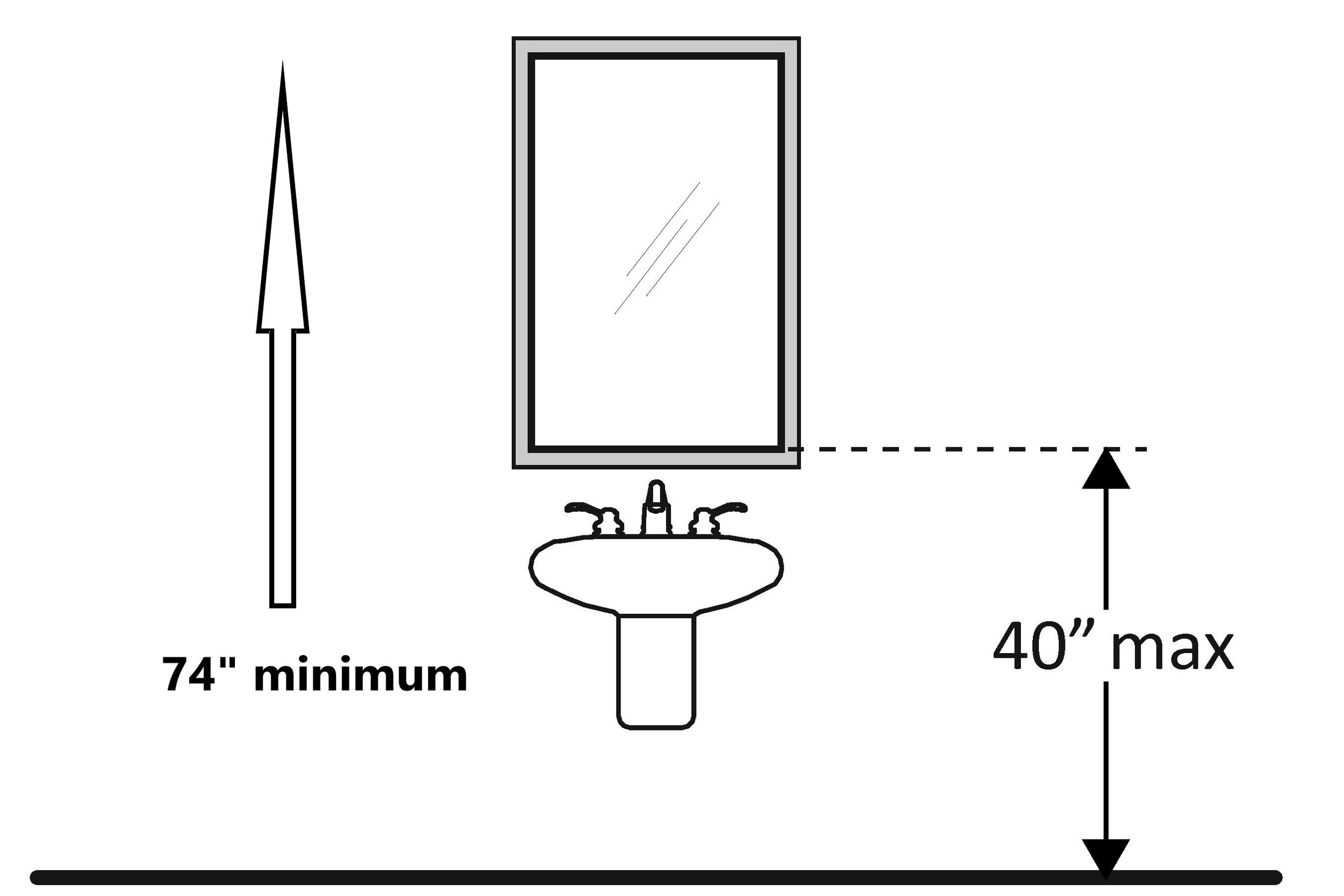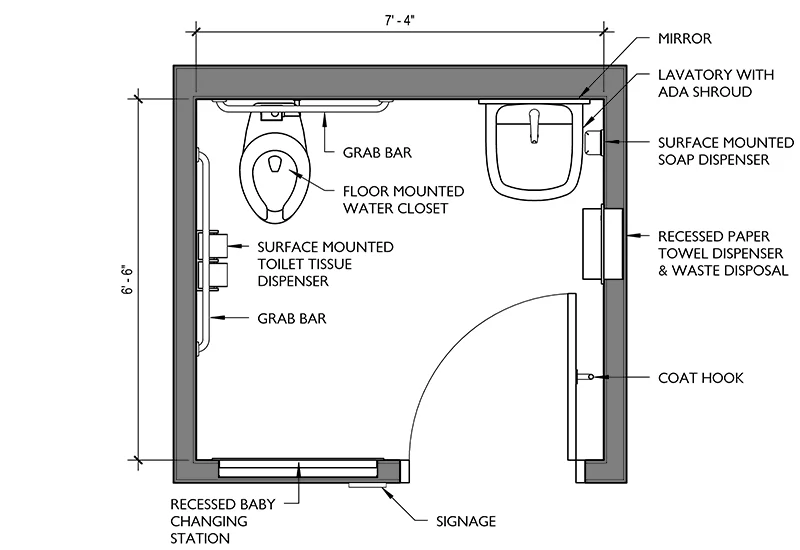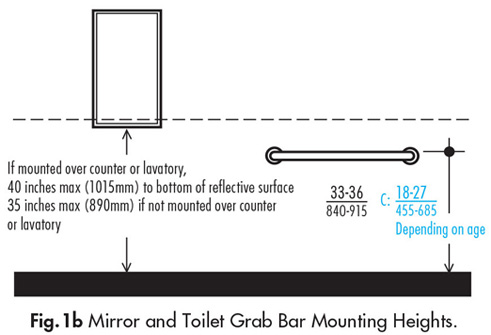ADA (Americans with Disabilities Act) bathroom mirror requirements are guidelines set forth by the United States Department of Justice to ensure that restroom facilities are accessible and usable by individuals with disabilities. These requirements outline specific criteria that bathroom mirrors must meet to accommodate people with various mobility and visual impairments. Compliance with ADA regulations is essential for public buildings, including restaurants, hotels, offices, and other commercial spaces, to ensure equal access and usability for all individuals.
One of the key ADA bathroom mirror requirements is related to mounting height. According to ADA guidelines, mirrors in inaccessible restrooms must be mounted with the bottom edge of the reflecting surface no higher than 40 inches above the finished floor. This height ensures that the mirror is easily accessible to individuals who use wheelchairs or mobility aids, allowing them to comfortably view their reflection without straining or reaching too high.
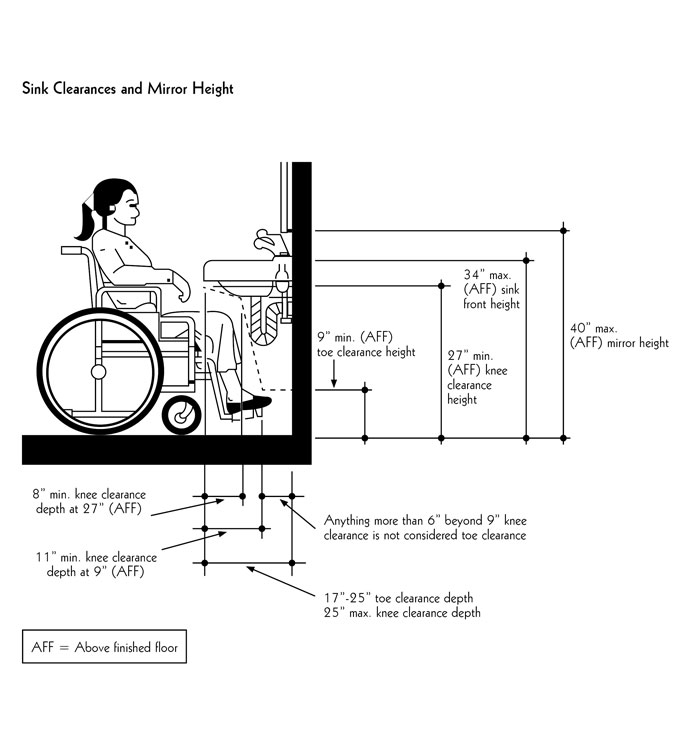
Furthermore, ADA requirements specify that mirrors in accessible restrooms must have a minimum width of 24 inches. This width ensures that the mirror provides an adequate viewing area for individuals of all sizes and abilities. Additionally, the guidelines recommend that mirrors be mounted in a location that provides clear floor space of at least 30 inches by 48 inches in front of the mirror to accommodate individuals who use mobility devices such as wheelchairs or walkers.
In addition to mounting height and width requirements, ADA guidelines also address the placement and visibility of bathroom mirrors. Mirrors must be installed in a location that provides a clear view and sufficient lighting for individuals with visual impairments. Additionally, mirrors should be positioned to minimize glare and provide uniform lighting to ensure that individuals with visual impairments can easily see themselves and their surroundings.
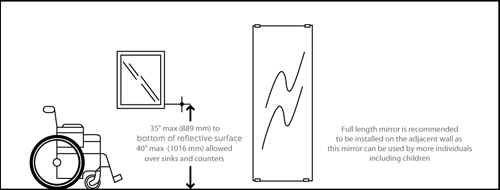
Another important aspect of ADA bathroom mirror requirements is related to safety and accessibility features. Mirrors must be securely mounted to the wall to prevent them from becoming dislodged or falling, posing a safety hazard to individuals using the restroom. Additionally, mirrors should be shatterproof or have a protective coating to reduce the risk of injury in the event of breakage.
Furthermore, ADA guidelines recommend that mirrors inaccessible restrooms be equipped with a tilt feature or mounted at a slight downward angle to improve visibility for individuals of shorter stature or individuals who use wheelchairs. This adjustment allows individuals to view their reflection more easily without straining or adjusting their position.
ADA bathroom mirror requirements are essential guidelines that ensure accessibility and usability for individuals with disabilities in restroom facilities. These requirements address mounting height, width, placement, visibility, safety, and accessibility features to accommodate individuals of all sizes and abilities. Compliance with ADA regulations is crucial for public buildings to provide equal access and ensure that individuals with disabilities can use restroom facilities comfortably, safely, and independently.
Mirror u2014 ADA Accessibility Articles u2014 reThink Access – Registered
Accessories in Public Restrooms ADA Guidelines – Harbor City Supply
ADA Bathroom Layout Commercial Restroom Requirements and Plans
ADA Bathroom Planning Guide – Mavi New York
ADA Inspections Nationwide, LLC u2014 ADA Compliancy
ADA Accessible Single User Toilet Room Layout and Requirements
8 ADA ideas restroom design, toilet design, public bathrooms
Chapter 6: Toilet Rooms
ADA Bathroom Handrails Check more at https://www.michelenails
Accessories in Public Restrooms ADA Guidelines – Harbor City Supply
Related articles:
- Cheap Illuminated Bathroom Mirrors
- Bathroom Mirror Or Medicine Cabinet
- Bathroom Mirror Decorative Trim
- Hib Solar Led Bathroom Mirror
- Bathroom Mirror Installation Instructions
- Pier 1 Bathroom Mirrors
- Bathroom Mirrors And Lights Medicine Cabinets
- Bathroom Mirrors Over Sink
- Homebase Bathroom Mirrors With Lights
- Powder Bathroom Mirrors
Ada Bathroom Mirror Requirements
When it comes to designing a restroom that is accessible to everyone, the Americans with Disabilities Act (ADA) sets the standards for all commercial restrooms in the United States. In particular, ADA bathroom mirror requirements are essential to ensure safety and accessibility for individuals with disabilities. This article will provide a comprehensive guide to ADA bathroom mirror requirements, including subheadings such as size and placement, height requirements, mounting locations, and FAQs.
Size and Placement of Mirrors
The size and placement of mirrors in an ADA-compliant restroom are crucial to ensure that everyone has access to them, regardless of their mobility level. According to ADA guidelines, mirrors must be mounted so that the bottom edge of the reflective surface is no more than 40 inches above the floor. This requirement ensures that individuals who use wheelchairs or have limited mobility can see themselves in the mirror without having to strain their necks or backs.
Regarding the mirror’s size, there are no specific requirements outlined in the ADA guidelines. However, it’s recommended that they are large enough to meet users’ needs without taking up too much space in the restroom. Moreover, installing multiple mirrors at varying heights can accommodate different users’ needs.
Height Requirements
As mentioned earlier, mirrors should be mounted so that their bottom edge is no more than 40 inches above the floor. However, there are exceptions to this rule. If a sink is placed underneath the mirror, then the reflective surface can be no more than 34 inches above the sink’s countertop.
Furthermore, if a tilting mirror is used instead of a fixed one, its bottom edge must be no more than 38 inches above the floor. The tilting mechanism allows users to adjust the mirror’s angle, making it easier for those who use wheelchairs or have limited mobility to see themselves.
Mounting Locations
ADA guidelines also specify where mirrors should be mounted in a restroom. The reflective surface should be mounted above or adjacent to the lavatory, and it should be centered over the sink. This placement ensures that everyone can see themselves in the mirror, regardless of their height or mobility level.
If a restroom has multiple sinks, each sink must have its mirror, and each one should be centered over the sink. Additionally, if there are multiple mirrors in a restroom, they should be placed at varying heights to accommodate different users’ needs.
Can ADA mirrors have frames?
Yes, ADA-compliant mirrors can have frames as long as they don’t interfere with accessibility requirements.
Can mirrors be placed on doors?
No, mirrors cannot be mounted on doors in an ADA-compliant restroom because they may obstruct the door’s clear opening width.
Do ADA guidelines require specific mirror shapes?
No, there are no specific mirror shape requirements outlined in the ADA guidelines.
ADA bathroom mirror requirements are essential for ensuring safety and accessibility for all individuals, regardless of their mobility level. By following these guidelines regarding size and placement, height requirements, and mounting locations, restrooms can provide a functional and accessible space for everyone. It’s essential to remember that while these guidelines exist to ensure compliance with federal law, they also contribute to creating a more welcoming and inclusive environment for all individuals.
